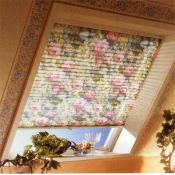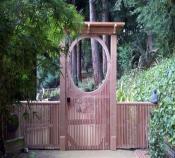Search
Login
Brick fence on the site, how to make a brick fence
A variety of materials can be used to build a fence on a suburban area. When choosing them, it should be borne in mind that the future fence should become the decoration of the site and its reliable protection. Therefore, you should carefully study the options for projects, choose the one suitable for yourself by design, cost and material of execution.
Content
- We choose the material for the manufacture of the fence on the site
- We build a brick fence with our own hands
- How to masonry a brick fence video video video
- We build protection for a brick fence
- Finishing work
We choose the material for the manufacture of the fence on the site

For the manufacture of fences in the suburban area are traditionally used: panels made of reinforced concrete, corrugated board, natural stones, mesh netting, wood, and of course brick. This article will be talking specifically about a brick fence, its advantages and disadvantages, the basic principles of its construction.
Due to its strength, brick is an excellent material for the construction of fencing, in addition, it does not require special care during subsequent operation, it also attracts the possibility of long-term and problem-free operation. Such a fence is able to create high-quality protection against the penetration of strangers or animals, it is able to protect even from the wind.

The only significant reason why there may be a refusal to build a brick fence may be its rather high cost. The positive point that is usually found at the stage of considering a brick fence in the photo is its attractiveness and solid appearance.
We build a brick fence with our own hands

All construction work can be divided into several stages. The first of them will, of course, be the laying of the foundation for a brick fence. It should be strong enough, its calculation is made taking into account the dimensions of the future structure and the type of soil. First, the terrain is broken up to the project, a trench is rummaged. It should be wider than the future fence by at least 10 cm. The recommended depth is from 60 cm to 1 m. Next, the location of the posts is determined, the recommended distance between them should not exceed 3 m. The locations of the gates and gates are drawn up in columns.
To give the foundation a special strength in the bottom of the trench, drill holes up to 0.4 m deep and install piles or pipes in them, pour concrete into the level with the bottom of the trench.
By constructing the formwork, the height of which is approximately 15 cm higher than the ground level, a frame of reinforcement for concreting is constructed in the trench. Now it's time to pour concrete. At this stage of the work, care should also be taken to install drain drains. Further work will be possible only after the concrete base has completely dried.
Do not forget that, as in the construction of a house, it will be necessary to carry out waterproofing. As a waterproofing, you can use roofing material or a plastic film.
How to masonry a brick fence

Laying a brick fence begins with pulling the rope, which will serve as a guide for each of the rows. Bricks should be placed so that they are exactly in the middle of the concrete base. When laying bricks, we verify their correct horizontal location along the stretched rope and vertical - according to the level. The bricks of each row above should overlap the joints of the bottom.
If we are building a brick fence from finishing material, then you need to do the work very carefully and preventing the mortar from getting on the front side of the brick. Of the tools, it is best to use a rubber spatula, immediately remove the remaining mortar with a damp sponge.

At the same time, brick posts for the fence are laid out. They are built by cladding pipes, as if blocking them inside. But masonry alone will not be enough to give proper strength, the columns are connected using fragments from reinforcement.
It is impossible to construct pillars empty inside - over time, under the influence of loads, they will change the geometry. Particular attention should be paid to the quality of poles located near the gates and gates - they are subject to even greater stress.
If the design of the fence involves the installation of additional elements, for example - forged lattices, it is recommended to tie them in at least two rows.
To strengthen the structure, it is customary to lay metal reinforcement or wire every 3-4 rows along the entire structure. She will become a connecting element.
After laying the sixth row, they usually pull the rope along the diagonal of the masonry and find out if there are any defects. At this stage, they can still be fixed with a rubber mallet. Acting in the same spirit bring the height of the fence to the planned.
We build protection for a brick fence
In order to ensure a long service life, it is customary to build caps on a brick fence. In order to prevent moisture from falling on the bricks from which the pillars are built and not destroying them, caps are put on top of them. If funds allow, then the same protection is desirable to arrange around the perimeter of the brickwork of the fence.

A cheaper option is to create a protective layer with your own hands. A layer of roofing material is carefully laid on top of the last row of bricks, attached with nails. Prepare a special cement mortar, which includes liquid glass. The composition is mixed until its moisture content noticeably decreases. Then the cement mortar is laid on top of the last layer of bricks with a slide resembling a gable roof.
Finishing work
To give the brick fence a more attractive appearance, jointing is done on it. Perform this procedure using special notched trowels. As a result, between the bricks you will get beautiful smooth depressions or ledges that will significantly improve the decorative effect of the fence.
Experienced craftsmen act in a slightly different way: they perform the masonry in such a way that the solution does not come out from the seams. They fill the resulting voids with a solution with the addition of coloring pigments and then make a cross-link.

Of course, the construction of a brick fence should most likely be attributed to complex and time-consuming work. Nevertheless, if there is a desire, then the work can be done independently - you should only be extremely careful and carry out all the actions strictly in accordance with the instructions and advice of experienced builders.





